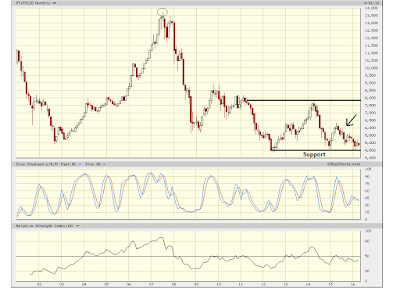Finding a Purpose in Your Trading
Recently I met up with an old school friend of mine and spent some time talking about time gone past, good times, bad times and our future prospects. He has been studying Pharmacology for 7 years and fast approaching the end of his Masters which makes me glee with pride. I know the hard work and dedication it takes to stay immersed in one aspect of your life together with a steadfast belief in a career path to ensure lifelong fulfillment.
But what struck me the most is when I found out why he had chosen this particular field of study. He had always shown a strong interest in biology but many would have thought it as normal, a preference or easy understanding of the subject yet I truly never knew why or asked until he told me his story recently.
He grew up with his grandfather and formed a very close bond with him. However his grandfather was diagnosed with cancer. You can only truly appreciate an impact of such life changing events when you get to live through it. He was very young and the thought of losing his grandfather, as anyone can imagine, left him shattered.
He sat next to his grandfather's bedside until he took his last breath and that moment he vowed that he would dedicate his life to cancer research in memory of his grandfather because of what he had felt during that experience.
Finding a purpose in life comes from our past experiences, hard or easy. What we value the most in our lives will ultimately determine the direction of our aspirations. We can never say with absolute certainty where our lives are headed yet we are in control of our desires. The desire to prove that no matter what the situation, we have the will and determination to overcome the most fearful experience and turn it into our greatest achievement.
In trading most will agree that anyone who decides to embark on this journey as have millions of others before them have done so based on the goal of making money. Not to say that the profit motive is the wrong reason, but if you solely base your desire to be rich you'll end up finding your patience with the learning curve wearing thin.
The amount of times you have to endure failure is more than you can imagine. The psychological impacts of these can be devastating to say the least but you have to have the drive to brush these aside and continue. There are no shortcuts when it comes to trading success, only the path less travelled.
Reflection is a great tool to discover yourself. Thinking about what drives you to keep coming back is really going to help you persevere. There are going to be times when your trading day is a total frustration but knowing your purpose to succeed is crucial to keeping you on the right path.
Finally never forget those experiences that define you, the moments in your life which became the turning point of everything. Most often you will find them to be the difference between you pushing on or simply giving up.
"The greatest glory in living lies not in never falling, but in rising everytime we fall"- Nelson Mandela







